Recent Commercial Posts
How Do I Protect My Business From Fire Disaster?
10/16/2022 (Permalink)
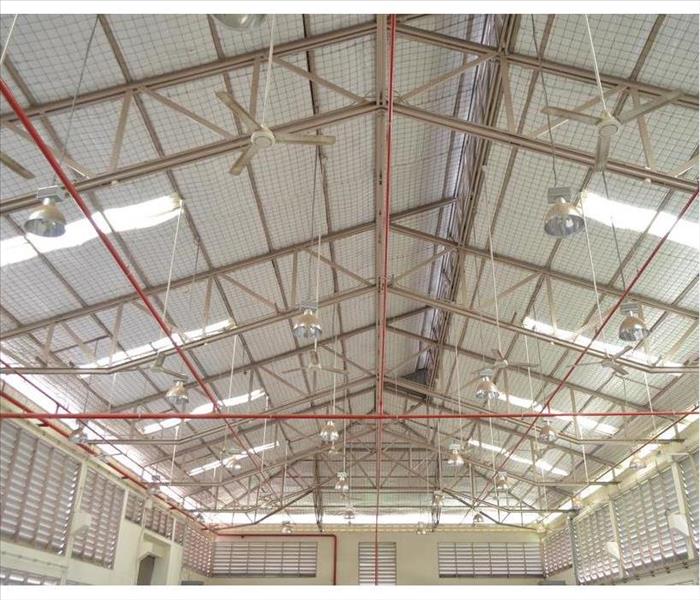 Install a fire sprinkler system
Install a fire sprinkler system
Fire Disaster and Your Business
Fire prevention is important to any business owner. You can protect your business by installing a fire sprinkler system, having a dependable fire alarm system installed, and having fire-resistant walls and ceilings. By taking these steps and more, you can prepare your company for the worst in case of emergency.
Install a Fire Sprinkler System
You should install a fire sprinkler system in your business. Fire sprinklers are an essential part of any building and can save lives, property, and money.
If you don't have a fire sprinkler system installed in your building yet, now is the time to get one. A fire sprinkler system will allow you to sleep at night knowing that your business is protected from a costly disaster. It also makes sense financially; if there's ever a fire at your place of business, installing a fire sprinkler system now will save you money down the road by reducing insurance premiums for years to come (and sometimes permanently).
Install a Dependable Fire Alarm System
You should always have an effective fire alarm system in place to keep your business safe, especially if it’s a large or high-risk location. If you do not have one yet, install one immediately!
Types of fire alarms
There are two main types of fire alarms: manual and automatic.
Manual systems require someone to pull the lever when there is a potential threat of fire, which then triggers a call for help from local authorities and other emergency responders if necessary.
Automatic systems detect smoke or heat signatures automatically without requiring human intervention; thus, they can be more efficient at detecting fires than manual ones. However, automatic systems can be more prone to false alerts due to their sensitive technology—especially if they're older than ten years old—and may not always reach authorities quickly enough in case of emergency situations such as earthquakes that cause structural damage but not necessarily fires themselves (although these events would still qualify as emergencies).
If possible, choose an automatic system with cellular backup capabilities so that even in cases where there's no power outage due to natural disasters like hurricanes Katrina and Sandy happening nearby - which happened near New Orleans back in 2005 - it'll still get signals out through radio waves instead via Wi-Fi connections being cut off by water damage caused by flooding during those storms
Install Fire Resistant Walls and Ceilings
One of the most important things you can do to protect your business from fire disasters is to install fire-resistant walls and ceilings. Fire-resistant walls and ceilings are designed to resist or prevent the spread of flames, smoke, and hot gases. They’re also useful in containing a fire if it does get started, which gives you more time to evacuate safely.
There are several types of fire-resistant materials available for walls and ceilings:
- Gypsum board (drywall) with a plaster finish applied over it
- Plasterboard (also called gypsum board) with an integral intumescent coating
- Rock wool insulation behind drywall with an intumescent coating applied over the top layer of plasterboard (gypsum board).
Always Have a Fire Extinguisher Handy
Use a fire extinguisher when needed. Read the instructions carefully and understand how to use your fire extinguisher before you need it. Know where your extinguishers are located and that they are in good working order. Check them at least once a year, or more frequently if you have reason to believe they may need it (e.g., if they were dropped). The manufacturer's instructions will tell you how often they should be checked or serviced by a professional, but every few years is probably fine as long as you keep an eye out for any signs of wear or damage, like cracks or rust spots that could cause leaks when you try to use them—and don't forget about those visual inspections. Make sure that all staff knows where the closest fire extinguisher is located and how to properly operate it in case of emergency—and make sure everyone understands its limitations: A fire extinguisher can only prevent fires from getting worse; it cannot put out an already raging blaze.
Fire prevention and preparation can save your business from suffering heavy losses. The importance of fire prevention can not be overstated. Fire damage can be very costly; if you have a small business, it may even put you out of business. Some types of businesses are more susceptible to fires than others. For example, restaurants and bars often have grease fires due to cooking equipment or flammable liquids like alcohol used in drinks. But any type of business could suffer from a devastating fire if they don't take the proper precautions against one happening:
Hopefully, we have shown you just how important it is to take fire safety seriously. The last thing that any business owner wants is to lose everything they’ve worked for. With these tips, you can rest easy knowing that your business will be safe from fire disasters.
If your Tyler business does catch on fire, SERVPRO of Tyler is here to help you clean up the mess and get back to normal.
The Relationship Between Fire Damage and Water Damage
7/31/2022 (Permalink)
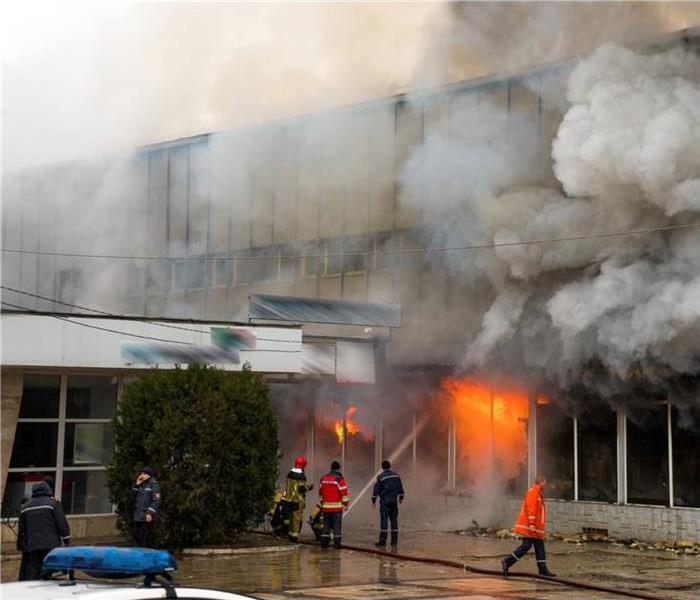 Commercial fire damage in Arp, TX
Commercial fire damage in Arp, TX
You've probably heard the saying, "Where's the smoke, there's fire." In the case of an office building fire, you could say, "Where's the fire, there's water." Experiencing a fire can be a scary event. Even small blazes can cause extensive fire damage. Thankfully, fire crews have the skills and equipment to extinguish the flame. However, this can introduce a new set of problems.
How Fires Start
If there is fire damage in your office, there are a few likely culprits for the incident. Office fires commonly start in the following ways:
- Electrical system problems
- Improper disposal of flammable materials
- People smoking cigarettes on the premises
The Consequences
A fire can rage through your office quickly and destroy building materials, furniture, documents, and electronics. The smoke damage can be just as harmful. Smoke leaves soot and ash on the floor, equipment, and other surfaces. You'll need to hire a professional disaster mitigation company to handle the cleanup and restoration efforts. The pros will tear out ruined building materials and other items. Technicians can salvage some equipment and supplies.
Water: A Help and a Hindrance
You'll be grateful for the firefighters in Arp, TX, and the water they use to put out the fire. These responders put out a lot of water from each fire hose. This method can be effective at eliminating the fire, but it also can cause further damage to your building. The water left behind can destroy computers, printers, carpets, and documents. If you don't clean up the water quickly, mold can start to grow.
A Professional Touch
The good news is professional cleanup technicians are experienced and skilled in removing any standing water. The company will mitigate the water damage in your office while cleaning up after the fire as well.
Along with fire damage, water can cause problems after a fire in your office. Be aware of the possible consequences and enlist the help of a water removal team.
The PPE Worn During Mold Removal
5/27/2022 (Permalink)
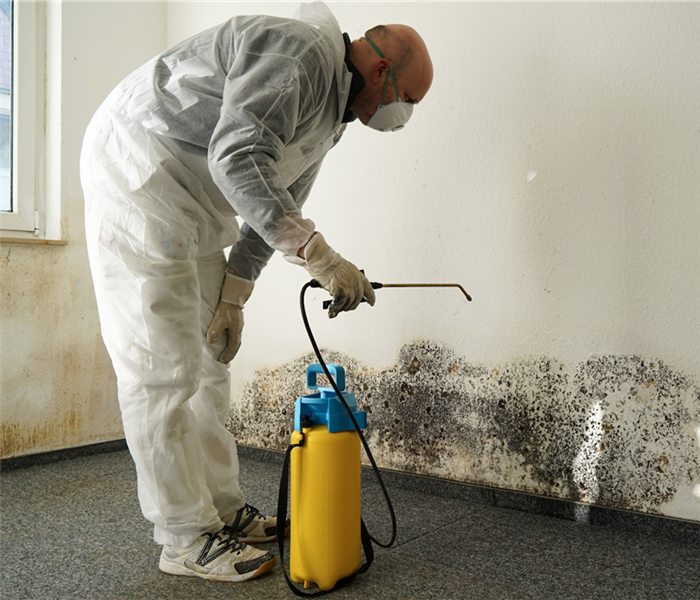 Professionals who are removing mold growth must wear standard PPE.
Professionals who are removing mold growth must wear standard PPE.
Personal Protective Equipment (PPE)
Personal Protective Equipment (PPE) is necessary to protect the workers from a remediation company when removing mold from a business in New Hope, TX. There are several pieces of equipment they will wear for any job, and there are several pieces that they will only wear for severe cleanups.
Standard PPE
Several PPE pieces are mandatory to protect workers and prevent the spread of spores during the mold remediation process. This includes:
- A hard hat
- Safety goggles
- Disposable gloves
- Shoe covers
- A respirator or face mask
Additional PPE
If a site is larger than 100 square feet, there is excessive mold or a substantial amount of dust will be generated, additional PPE pieces are required to protect workers. These should be worn over the standard PPE. One requirement is a more substantial face mask, with N, R, or P 100 filters. In the most severe cases, workers may also choose to use a charcoal-infused filter to prevent odors from lingering on their masks. They should also consider abrasive blasting respirators to prevent certain particles from being inhaled.
Another enhancement that can be made to standard PPE is non-vented safety goggles so that no debris or spores can get around the eyes. If harsh chemicals are being used, workers may also be encouraged to wear longer disposable gloves to reduce their exposure risk further. Aside from these upgrades, workers on more severe mold cases should also wear a disposable Tyvek suit to reduce their chance of coming into contact with spores and chemicals. They may also choose to upgrade their disposable clothing further by looking for suits that cover the head and feet.
Professionals who are removing mold growth must take several precautions to prevent contact with spores, chemicals, and other debris. For small tasks, this includes wearing standard PPE. For larger or more dangerous tasks, this includes standard PPE plus any additional PPE required.
3 Steps To Take When Your Roof is Damaged by a Fire
5/17/2022 (Permalink)
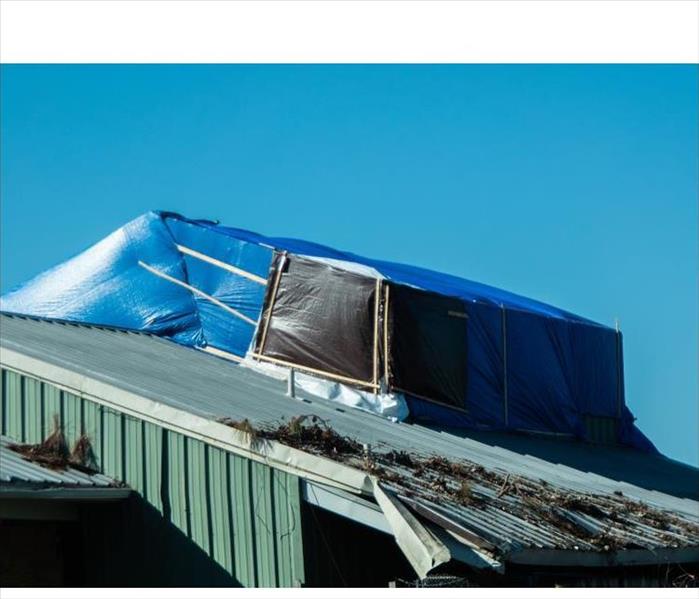 Roof tarping services in Whitehouse, TX.
Roof tarping services in Whitehouse, TX.
What To Do When Your Roof Has Been Damaged By Fire?
Your roof is one of the most important parts of your building. It protects the interior of your structure from the outside elements and helps control the interior temperature. Fire cleanup and repair are important for restoring your roof to its full function.
1. Cover Damaged Areas With Tarp
It may take some time before roof repair can be completed. Covering damaged areas with a tarp prevents rain, snow, hail or animals from getting in your building through openings and causing additional damage. Your property insurance will probably cover the cost to place a tarp. If you have a large surface area that needs covering, you may want to contact a fire restoration service in Whitehouse, TX, for tarp services.
2. Perform Fire Cleanup
If your roof was severely damaged, there is probably a lot of debris inside your building that needs to be cleaned up before repairs can begin. Most cleanup should be done by professionals. However, you can start getting the area ready by removing damaged contents and cleaning walls and floors. If the building has structural damage, do not try to begin cleanup until the fire department has inspected the building and said it is safe.
3. Take Steps To Prevent Future Damage
Now is a good time to take some steps to reduce your chance of future fire damage. Implement a maintenance program to fix roof leaks promptly. Holes in the roof can allow embers from a fire to get under the roof where framing, insulation and other flammable materials can ignite. Keep your roof clean. Debris, such as leaves and pine needles, can catch fire during lightning strikes or dry conditions. This is particularly important if you have a flat roof that accumulates a lot of debris.
The fire cleanup process can be lengthy and frustrating. However, taking these steps can protect your property from unnecessary additional damage.
How To Prevent Mold Growth in Commercial Facilities
3/31/2022 (Permalink)
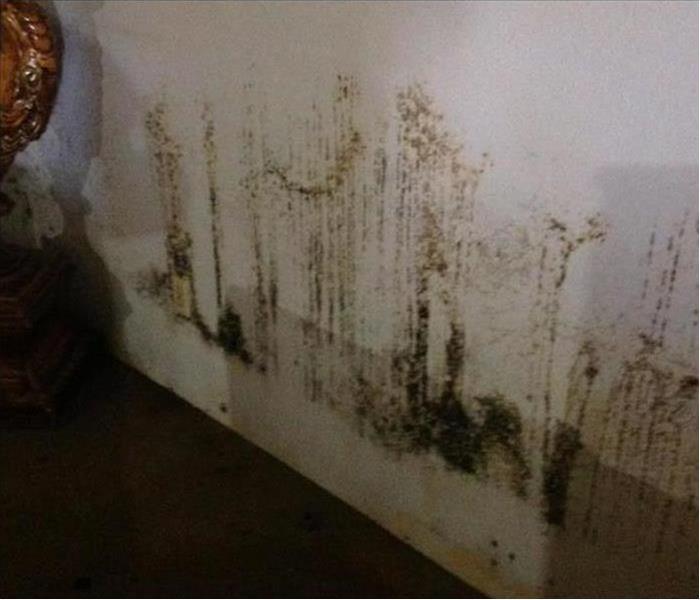 Mold growth after flooding in Flint, TX.
Mold growth after flooding in Flint, TX.
Mold Prevention Plan
To keep your Flint, TX, facility running smoothly, you need to practice mold prevention strategies. Unfortunately, this is often easier said than done. That is because mold is common in commercial facilities. These properties typically feature the four ingredients that mold needs:
- A surface
- Darkness
- Moisture
- Organic nutrients
Any lingering dirt or dust in your building provides the nutrients mold loves. Combine that with a dark room and a small leak, and you could quickly end up with a mold problem. Below are some common location for mold growth in facilities and how you can limit the spread of the fungus in those areas.
Electrical Equipment
Mold can appear in the electrical conduit following a flood. However, even just inviting warm, moist air near outlets, lighting fixtures and switches can cause the fungus to appear. Any water near electrical equipment should be dried right away. You should also seal and caulk the spaces around outlets to block moist air.
Carpets
Keeping carpets dry is another key part of mold prevention. Carpets can get wet following a major water damage or a minor spill. If a carpet is soaked for less than 48 hours, experts should be able to remove the water with a wet vacuum. However, a carpet that has been contaminated by sewage water should be replaced.
Drain Pans
Drain pans should collect condensation from the HVAC system. However, if the pan clogs, mold could quickly develop. Clean the pan regularly to prevent dirt from blocking the drain line.
Humidity can also cause a carpet to get moist. If you suspect that this is happening, increase the temperature or airflow in the room so the moisture evaporates.
You can limit mold growth in your facility by reducing moisture and cleaning up any excess water immediately. As part of your mold prevention plan, you should check dark and dirty locations regularly for signs of wetness and address them quickly. If you do notice any mold during your inspections, have commercial restoration experts clean the area immediately before the fungus spreads.
3 Tips to Prepare for High Winds
2/1/2022 (Permalink)
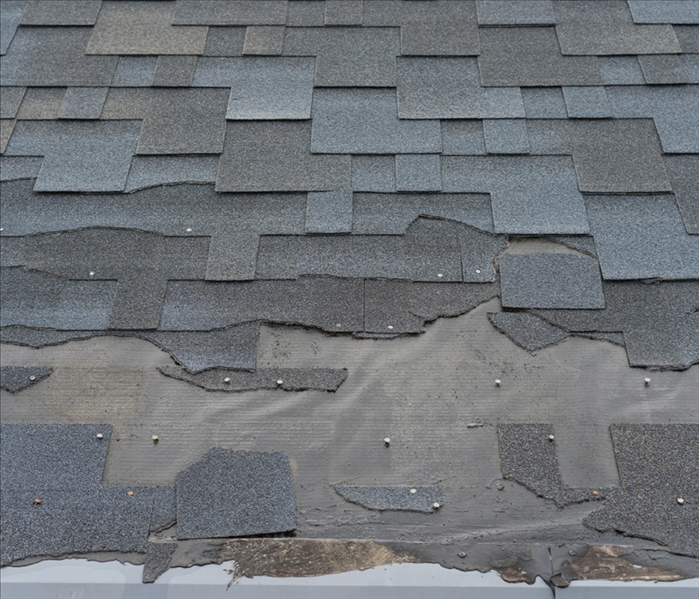 High winds can cause tiles or shingles to be loose.
High winds can cause tiles or shingles to be loose.
Prepare for High Winds
Whether from a winter storm or a summer deluge, high winds are one of the most potentially damaging parts of any storm. Able to turn simple waste bins into high-speed missiles, storm winds can be responsible for excessive property damage and even injury. If you’re wondering how to prepare your Whitehouse, TX, property for the risks of storm or hurricane damage, read on for tips that can save you money and stress.
Defining High Wind
Determining what constitutes high wind isn’t simple. The National Weather Service has tried to make it easier. Per NWS:
- Winds 15 to 25 mph are considered “breezy”
- Winds above 25 mph are considered “windy”
In general, gusts falling into the windy category warrant taking the following steps.
Secure Your Property’s Exterior
Wind can easily pick up loose items outside and launch them into a building or person. Invest in wind shutters or cover windows with plywood in a pinch if gales are anticipated. Secure items like gas tanks and water heaters to prevent them from becoming projectiles.
Secure Your Interior
It’s easy but unwise to forget about the inside of your property when preparing for hurricane damage. Anchor large furniture like bookcases and cabinets that can fall over. Use Velcro or straps to secure computers or other fragile electronics.
Inspect Your Property
One of the best tips is to inspect your property well in advance of storm season, when you have the most time to make changes. Inspect your property for trees that need trimming or removal; trees with loose root systems can easily tip over in strong gusts. Have your roof inspected to ensure there are no loose tiles or shingles that can be dislodged amid winds.
High winds can pose a high risk. Be ready. Use these tips to reduce the risk of storm or hurricane damage and contact a storm cleanup specialist to handle any damage you do incur.
How Best To Proceed With Fire Restoration
1/25/2022 (Permalink)
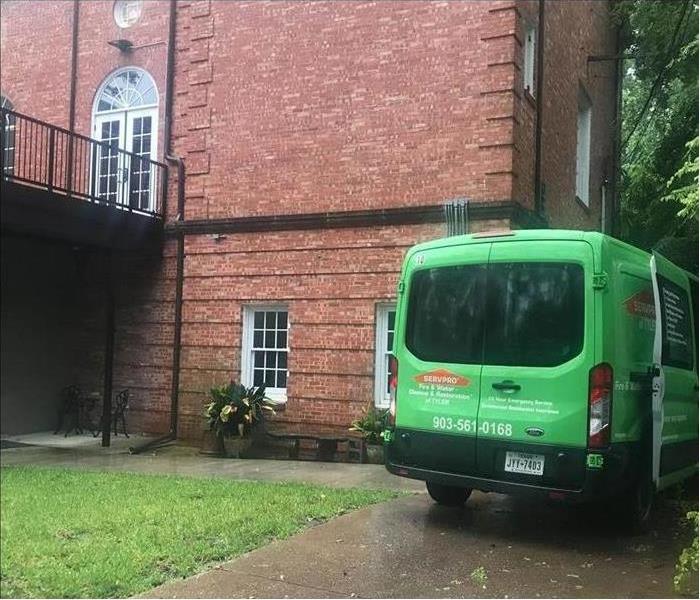 Our team provides assistance after a fire loss in your home or business.
Our team provides assistance after a fire loss in your home or business.
Fire Cleanup Process
Absorbing everything that has happened once a fire has been contained can be a lengthy process, both mentally and emotionally. Unfortunately, dealing with the fire restoration process and calling on your fire insurance is a far more time-sensitive issue. Smoke, soot and water damage in commercial buildings in Tyler, TX, should be addressed quickly, as the effects can be detrimental to everyone’s health and safety. Learn how to start and manage the fire cleanup process with these important tips, and get help to begin the difficult task of smoke cleaning from the affected areas.
? Consult professionals before taking any first steps yourself. The charred and damaged areas consumed by the fire can be highly dangerous, whether due to unstable structures or dirty water and soot left behind that could potentially make you sick. Waiting for the fire department to give the all-clear signal before entering the building is crucial.
? Get estimates regarding restoration and cleaning fees. Fire restoration can come with an expensive price tag, depending on the significance of the repairs needed. Initiate the steps necessary to determine what your insurance company will cover, and be sure to keep all agreements in writing to cover yourself legally.
? Start hiring fire repair and board-up services — and keep any receipts related to the fire damage. Professional cleaners are vital to the restoration process to ensure the area is safe for people to inhabit again, while board-up providers can keep company belongings secured while you’re away. Meanwhile, it’s important to keep all receipts in a safe place for your personal records and to have copies handy for your insurance company, as well as for tax purposes.
Clearing away smoke damage through fire restoration procedures is essential to the health and safety of everyone involved. Take the necessary time to contact your fire insurance representatives and invest in proper smoke cleaning for the sake of all who were affected by the tragedy.



 24/7 Emergency Service
24/7 Emergency Service






